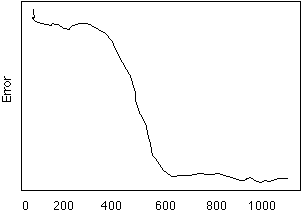
The following is the LMS Error plot of one learning session for the XOR Network. From this a number of question arise.

Questions
Explanations
First, we plot the hidden unit space, just like we had plotted the input space.

How? y=ax+b PLug in patterns get...
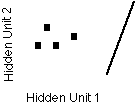 |
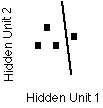 |
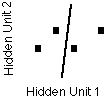 |
Epoch 300  Hidden Unit 1 |
Notice, the network changes the hidden to output weights more than the input to the hidden weights. This is because the input to output weights are a derivative times the derivation. In essence the error is diluted every step back.
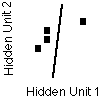 |
 Hidden Unit 1 |
 |
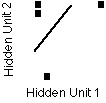 |
How is this changing the activation function?
Well, of course, the sigmoid function never acctually changes, BUT
the connectivity of the network can change the part of the sigmoid
function each individual unit uses. For Michael's money, if the
output units responds differently to different inputs (aka, moving
from a linear to a sigmoid), then this is effectively changing
the activation function.
Indeed, the output unit of the XOR
does change its responding, from linear, to sigmoid, to linear
and back again. Why? Because as the net input changes, the slope of
the sigmoid function changes. Thus, the larger the net input, the
steeper the sigmoid slope.
|
Coments to: ghollich@yahoo.com |
Last Modified: Sep 20, 1999 |